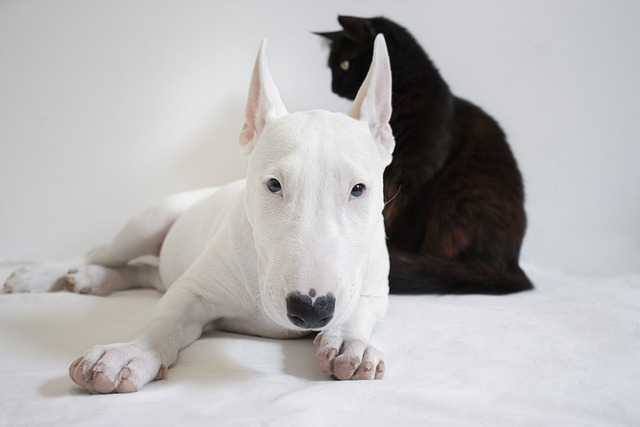
How to train your puppy to like grooming?
Grooming your puppy should be a bonding experience, not a wrestling match. But those tiny paws batting at the brush and squirms during nail trims can make it seem impossible.
Watching your dogs snarl and snap at each other isn’t just stressful—it can quickly turn dangerous. Aggression between dogs under the same roof can stem from territory disputes, resource guarding, or even underlying anxiety. But before you throw in the towel, know that with patience and the right approach, you can turn tension into tail wags.
First things first: safety always comes first. In many regions, pet owners are legally responsible for preventing dog fights that could harm people or other animals. If the aggression escalates to biting or serious injury, local animal control may get involved, and in extreme cases, your dog could face quarantine or even euthanasia. When hostility flares up, separate the dogs immediately using a barrier or a sturdy leash. Never try to break up a fight with your bare hands—use a long broom, a large blanket, or a hose to create distance.
To understand the root cause, observe the patterns. Does aggression spike during mealtime, when a new toy appears, or when one dog approaches the other’s bed? Resource guarding is a common trigger, and ignoring it can lead to repeated confrontations. Many areas have regulations against keeping aggressive animals without proper management, so identifying the cause isn’t just about peace at home—it’s about staying on the right side of the law.
Gradual introductions work wonders. If you’ve recently brought a new dog home, start with controlled meetings outside the house. Walk them side by side on leashes, keeping a safe distance. Reward calm behavior with treats and praise, creating positive associations. Once they seem relaxed, let them interact briefly in a neutral space like a park. In some communities, animal shelters offer supervised meet-and-greet sessions that can ease the process while ensuring compliance with local pet introduction guidelines.
 Manage resources strategically. Feed dogs in separate rooms and remove bowls as soon as they finish eating. Hide toys when not in use and rotate them regularly to prevent possessiveness. If one dog guards a particular area, block access with baby gates or rearrange furniture. Remember, allowing unchecked resource guarding can violate animal welfare laws that require providing a stress-free environment for pets.
Manage resources strategically. Feed dogs in separate rooms and remove bowls as soon as they finish eating. Hide toys when not in use and rotate them regularly to prevent possessiveness. If one dog guards a particular area, block access with baby gates or rearrange furniture. Remember, allowing unchecked resource guarding can violate animal welfare laws that require providing a stress-free environment for pets.
Positive reinforcement training is key. Teach basic commands like “leave it,” “sit,” and “stay” using high-value treats. When dogs start showing signs of aggression, redirect their attention with these commands instead of scolding. Many local trainers offer specialized classes for multi-dog households, and some municipalities subsidize training programs to promote responsible pet ownership. Investing in professional help not only resolves aggression but also ensures you meet community standards for pet behavior.
Give each dog their own space. Set up separate beds, feeding stations, and play areas. Dogs, especially those with a history of conflict, need a place where they feel safe and in control. This isn’t just about comfort—it’s a legal obligation in many places to provide adequate living conditions for each pet. A cozy crate or a quiet corner can serve as a personal retreat, reducing territorial disputes.
If aggression persists despite your best efforts, consult a veterinarian or a certified animal behaviorist. Medical issues like pain, hormonal imbalances, or neurological problems can trigger sudden aggression. Getting a professional diagnosis not only addresses the root cause but also provides documentation that may be required if local authorities question your dog’s behavior. Remember, taking proactive steps to manage aggression isn’t just about saving your sanity—it’s about giving your dogs the chance to live harmoniously under one roof.

Grooming your puppy should be a bonding experience, not a wrestling match. But those tiny paws batting at the brush and squirms during nail trims can make it seem impossible.

Bringing a new puppy home is a whirlwind of joy, but those unexpected puddles on the rug can quickly turn excitement into frustration.

Discover why calming sounds, not harsh noises, are the key to reducing dog barking—backed by science and real stories of stress-free pups.

Watching your dogs snarl and snap at each other isn’t just stressful—it can quickly turn dangerous. Aggression between dogs under the same roof can stem from territory disputes, resource guarding, or even underlying anxiety.

That heart-jolting moment: the doorbell rings, and your dog transforms into a fur-covered alarm system. Whether you’re in a Brooklyn walk-up or a suburban split-level

You’re in the middle of an important video call, and your dog won’t stop barking. Or maybe it’s late at night, and your neighbor’s dog’s incessant barking is keeping you up.